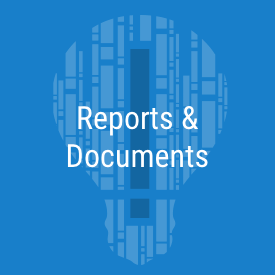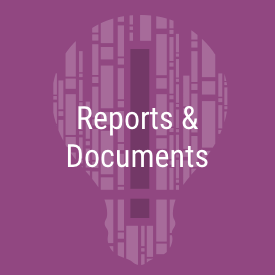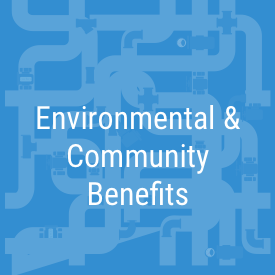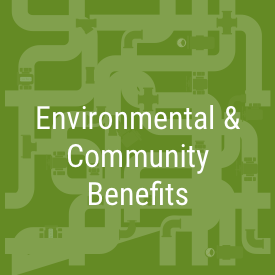This project helps Valley Water meet surface water quality standards and reduces pollutants in streams, groundwater, lakes and reservoirs. Efforts are carried out in compliance with the Regional Water Quality Control Board (RWQCB) Total Maximum Daily Loads (TMDLs) standards as they continue to evolve (TMDLs are the maximum amount of a pollutant that a water body can receive and still safely meet water quality standards). Under this project, Valley Water employs treatment systems in reservoirs to reduce methylmercury formation, and helps create realistic plans and expectations for reducing contaminant loads by engaging in the regulatory development process with the RWQCB for new and emerging contaminants.








KPI #1: Treatment Systems in Reservoirs and Mercury Studies
-
Most of the annual maintenance of oxygen generators was completed in March 2021. During that maintenance, additional problems were identified that will be addressed in June 2021.
-
In-reservoir oxygen distribution lines will be repaired and serviced in May 2021.
-
Valley Water performs twice-monthly water quality monitoring at Almaden, Guadalupe, Calero, and Stevens Creek reservoirs, and Almaden Lake when the reservoirs and lake are stratified (monthly the rest of the year). Monitoring has occurred intermittently due to local regulations surrounding COVID-19 and low water levels that do not permit boat access.
-
Valley Water staff worked with colleagues from RWQCB and UC Merced to author a technical manuscript on the effectiveness of the oxygenation system in reducing fish tissue mercury. The manuscript was recently published in the journal Environmental Pollution, available here.
-
Valley Water coordinated with project partners (County of Santa Clara, Midpeninsula Regional Open Space District, and Guadalupe Rubbish Disposal Company) and the RWQCB to continue implementation of the second 5-year phase of the Coordinated Monitoring Program for the Guadalupe River Watershed Mercury TMDL project. For more information on the TMDL project, please see here. A progress report was submitted to the RWQCB in March 2020 and can be found here. An annual report was submitted in June 2020 and can be found here. Winter 2020/2021 rainfall was insufficient to trigger sampling this year. Valley Water and the project contractor will continue to monitor rainfall and sample when conditions are met.
-
In partnership with USGS, Valley Water sampled water in May and August of 2019 to study methylmercury production in the water columns of four reservoirs. USGS has published a data release and is currently preparing a manuscript for publication.
-
To better understand the effects of the oxygenation system on Stevens Creek Reservoir discharge and downstream dissolved oxygen, turbidity, and temperature, Valley Water is conducting a one-year study starting in June 2020. Results of the study will help staff optimize operation of the oxygenation system to maximize overall benefits. The study plan can be found here.
-
Valley Water staff gave presentations on reservoir oxygenation and mercury remediation at the North American Lake Management Society annual conference (November 2020), the California Lake Management Society annual conference (October 2020), the California Aquatic Bioassessment Workgroup (October 2020), the Delta Tributaries Mercury Council (September 2020), and at the Waste Management Symposium (March 2020).
-
Valley Water collected suspended particulate matter and zooplankton from Almaden, Calero, Guadalupe, and Stevens Creek reservoirs in October 2020. These samples are being analyzed for stable isotopes of nitrogen and carbon, total mercury, and methylmercury as part of Valley Water’s reservoir mercury bioaccumulation study.
KPI #2 Prioritization Plan
-
Valley Water developed the Prioritization and Implementation of Pollution Prevention and Reduction Activities Plan to Address Impaired Water Bodies in Santa Clara County in January 2015 and updated it in June 2017 with revised analysis of impaired water bodies. The plan is currently being revised.
KPI #3: Pollution prevention activities
-
Pollution Prevention Activity #1: Accumulation Point Mapping and Removal (Guadalupe River)
Valley Water and City of San José staff conducted visual trash assessments of Guadalupe River in October 2020. In February 2021, 6 cubic yards of trash were removed from Guadalupe River between Willow and Alma Street. In March 2021, 15 cubic yards of trash were removed from Guadalupe River downstream of Malone Road. -
Pollution Prevention Activity #2: Discourage the re-establishment of encampments along Guadalupe River and Coyote Creek
In May 2019, Valley Water signed an agreement with the San José Police Department (SJPD) to fund a pilot program for SJPD to conduct patrols targeting criminal activities along local waterways. That agreement was extended in January 2020. Patrols were suspended from April 2020 to June 2020 due to the COVID-19 pandemic. The agreement was extended again in October 2020. Valley Water also funds a California Department of Fish and Wildlife warden position. -
Pollution Prevention Activity #3: Coyote Creek Trash Mapping and Removal
Valley Water and City of San Jose staff began visual trash assessments along Coyote Creek in October 2020. Remaining assessments were suspended in December 2020 due to the COVID-19 pandemic. In January 2021, 12 cubic yards of trash were removed from Coyote Creek at Watson Park. See the Coyote and Guadalupe Creek Trash Accumulation Point GIS map here. -
Pollution Prevention Activity #4: Angler Survey
Valley Water completed the Santa Clara County Reservoir Angler Survey at mercury-impaired reservoirs and lakes to assist with future outreach and signage. Valley Water completed a final report which is posted here. -
Pollution Prevention Activity #5: Homelessness Best Practices
Valley Water previously collaborated with the City of San José to provide homeless residents with trash bags to contain their waste, primarily along Coyote Creek and Guadalupe River. The City previously distributed transparent blue trash bags to its creek cleanup partners, Downtown Streets Team, and homeless service providers to encourage homeless people to bag their trash. Homeless people used the bags and left them along trails and sidewalks for pickup by various city departments, creek partners, and Downtown Streets Team. In 2019, Valley Water began assisting the City with this effort, including purchasing 2,500 bags for distribution and conducting two bag pickup events. Trash bag pickups by Valley Water under this effort are no longer active. Bag pickup and distribution needs are now being serviced through the City of San Jose’s Beautify SJ initiative as part of their response to the COVID-19 pandemic. Staff is researching additional options for homelessness best practices to support clean waterways. -
Pollution Prevention Activity #6: Reservoir Greenhouse Gas Emission Study
Valley Water entered a collaborative agreement with University of California, Davis to study greenhouse gas emissions from the surfaces of Chesbro, Stevens Creek, and Uvas Reservoirs. During this year-long study, researchers will quantify the seasonal and spatial variation of reservoir greenhouse gas fluxes. This information will be incorporated Valley Water’s Climate Change Action Plan to help achieve carbon neutrality. In October 2020 and February 2021, researchers did sonar-like hydroacoustic surveys and measured greenhouse gas flux rates at all three reservoirs. Monthly 24-hour greenhouse gas flux monitoring events in Uvas Reservoir began in February.
Updated April 2021
Mercury studies
District studies
Coordinated monitoring program
-
Guadalupe River Coordinated Monitoring Program 5-Year Report (2011-2016)
-
Coordinated Monitoring Program Interim Monitoring Report 2018-2019
Pollution prevention activities
-
Updated the B1 Prioritization Plan with revised analysis of impaired water bodies.
-
Pollution Prevention Activity #1: Guadalupe River Trash Mapping
Coyote Creek and Guadalupe River Trash Accumulation Map -
Pollution Prevention Activity #2: Funding of a City of San Jose Park Ranger
No reports. -
Pollution Prevention Activity #3: Coyote Creek Trash Mapping and Removal
Coyote Creek and Guadalupe River Trash Accumulation Map -
Pollution Prevention Activity #4: Angler Survey
Angler Survey Final Report
Key Performance Indicators for the Safe, Clean Water Program
-
Operate and maintain existing treatment systems in 4 reservoirs to remediate regulated contaminants, including mercury.
-
Prepare plan for the prioritization of pollution prevention and reduction activities.
-
Implement priority pollution prevention and reduction activities identified in the plan in 10 creeks.
Benefits
-
Reduces contamination in creeks and reservoirs
-
Improves water quality, including water going to drinking water treatment plants
-
Reduces methylmercury in reservoirs to prevent its entry into the food web
-
Improves ecosystem health by reducing mercury contamination in fish and other biota.
-
Supports regulatory compliance of TMDL standards affecting Valley Water operations
Geographic Area of Benefit
Countywide
About the Safe, Clean Water and Natural Flood Protection Program
In November 2012 the voters of Santa Clara County overwhelmingly approved Measure B, the Safe, Clean Water and Natural Flood Protection Program, as a countywide special parcel tax for 15 years with a sunset date of June 30, 2028. This Program replaced the Clean, Safe Creeks and Natural Flood Protection Plan, which voters approved in November 2000.
The Safe, Clean Water Program was developed with input from more than 16,000 residents and stakeholders and was created to match the community’s needs and values. The voters of Santa Clara County identified five priorities:
Priority A: Ensure a Safe, Reliable Water Supply
Priority B: Reduce Toxins, Hazards and Contaminants in our Waterways
Priority C: Protect our Water Supply from Earthquakes and Natural Disasters
Priority D: Restore Wildlife Habitat and Provide Open Space
Priority E: Provide Flood Protection to Homes, Businesses, Schools and Highways
Other: Six projects from the Clean, Safe, Creeks Plan have been carried forward into the Safe, Clean Water Program.
Each year, Valley Water prepares a report providing a progress update for each of these Program priorities, along with fiscal year accomplishments.
To ensure transparency and accountability to the voters, the ballot measure also created an Independent Monitoring Committee, appointed by the Santa Clara Valley Water District Board of Directors. The Independent Monitoring Committee annually reviews the Program’s progress to ensure the outcomes are achieved in a cost-efficient manner and reports its findings to the Board.
In addition, the Program requires three independent audits, the first of which was conducted in FY 2017.






